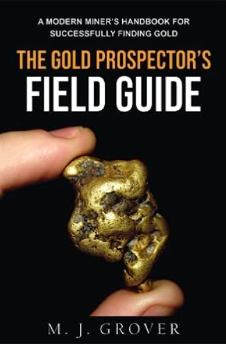The Fricot Nugget

The Fricot Nugget is an impressive piece of crystalline gold that was found by William Russell Davis in 1865. It was discovered while mining at the Grit Mine at Spanish Dry Diggin's in El Dorado County. Mr. Davis found it in a pocket roughly 200 feet below the surface, along with roughly 200 ounces of other smaller nuggets. It was later sent to New York, where it was purchased by Mr. Fricot, who had formerly lived in Grass Valley, California. The nugget has traveled the world in various displays including the Paris Exposition in 1878.
It weighs an impressive 201 troy ounces and is one of the largest masses of gold still to remain intact from the old gold rush days. Although there were many nuggets that were even larger discovered in California, most were melted and refined to extract their gold content. It is well known for it's huge size, but it's unusual and rare crystalline structure makes this nugget even more amazing. The unique structure of the gold makes it even more rare and highly sought after by collectors.
More Famous Gold Nuggets
Fortunately, the Fricot Nugget has remained intact and is currently housed at the California State Mining and Mineral Museum in Mariposa, California. A robbery of the museum occurred in October 2012, and millions of dollars worth of gold nuggets were stolen, but fortunately the thieves were unable to get into the safe that housed the Fricot Nugget. In addition to the impressive gold collection, the museum houses many important relic from the past mining era, including old mining equipment and historical documents from the early gold rush of 1849.
Buy Natural Gold Nuggets
It weighs an impressive 201 troy ounces and is one of the largest masses of gold still to remain intact from the old gold rush days. Although there were many nuggets that were even larger discovered in California, most were melted and refined to extract their gold content. It is well known for it's huge size, but it's unusual and rare crystalline structure makes this nugget even more amazing. The unique structure of the gold makes it even more rare and highly sought after by collectors.
More Famous Gold Nuggets
Fortunately, the Fricot Nugget has remained intact and is currently housed at the California State Mining and Mineral Museum in Mariposa, California. A robbery of the museum occurred in October 2012, and millions of dollars worth of gold nuggets were stolen, but fortunately the thieves were unable to get into the safe that housed the Fricot Nugget. In addition to the impressive gold collection, the museum houses many important relic from the past mining era, including old mining equipment and historical documents from the early gold rush of 1849.
Buy Natural Gold Nuggets
Highly Recommended Prospecting Books on Amazon:

The Gold Prospector's Field Guide:
A Modern Miner's Handbook for Successfully Finding Gold

Metal Detecting Gold Nuggets:
The Essential Guide to Finding Gold with a Metal Detector
